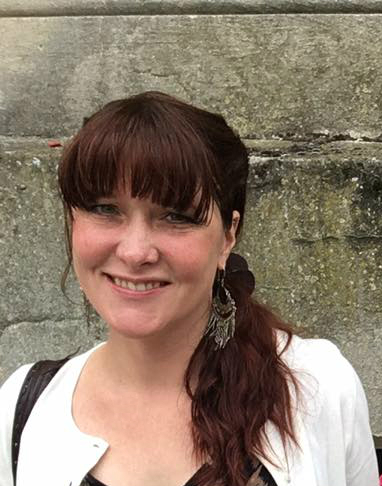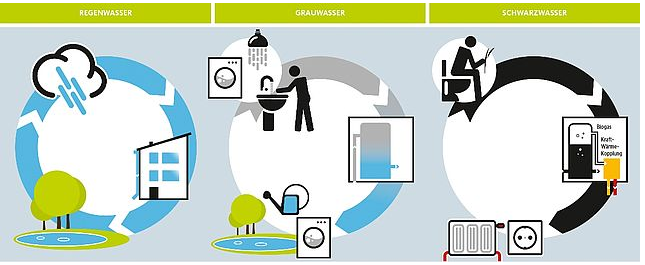
Eleanor Eaton, WATEF network
Green Energy from Black Water: The Hamburg Water Cycle
| About the author: Eleanor Eaton is the Project Coordinator for the Water Efficiency Network (WATEF) at the University of Bath. |
 |
|

"With the HAMBURG WATER Cycle, we have done real pioneering work at HAMBURG WASSER. By treating wastewater directly in the neighbourhood, we not only reduce CO2 emissions. The entire system is self-sufficient and we provide heat and electricity to the neighbourhood..."
"With the HAMBURG WATER Cycle, we have built a demonstration plant for further projects of this kind throughout Europe. In addition, today's commissioning opens up a new field of research. Together with scientific partners we can investigate important questions in the Jenfelder Au; among other things, how micro pollutants in wastewater can be eliminated. "
(Nathalie Leroy, Managing Director of HAMBURG WASSER.)
"Climate change presents us with major challenges - including drinking water supply and disposal. Thanks to HAMBURG WASSER, we are well prepared for extreme summers like 2018. But climate change requires us to adapt our infrastructure and water resource management to this challenge. With HAMBURG WATER Cycle, HAMBURG WASSER sets the course for the wastewater disposal of the future. Thanks to the technical innovation that we are developing for the first time on a large scale in the Jenfelder Au, the municipal company is making a decisive contribution to achieving our climate goals. CO2 emissions are reduced, water saved and energy produced. That pays several times for climate protection"
(Jens Kerstan, environmental and energy donator of the Free and Hanseatic City of Hamburg.)
The HAMBURG WATER Cycle can also vary on its scale of
implementation. The most crucial feature is the separation of wastewater
streams and the subsequent energy recovery from wastewater. In the neighbourhood
of Jenfelder Au, a feature is added, rainwater, which extends the creative
possibilities of urban- and landscape-planners. In the open space design,
rainwater becomes a creative element.
The Jenfelder Au stormwater management concept decouples the rainwater flow from the sewer network, allowing the water to flow over the natural landscape back to the local waters. The landscape and urban planning concept is made possible through the use of open channels which allow rain to flow through streams and waterfalls to retention basins which are in the form of attractive ponds and lakes. Thus, the appearance of the residential area is enhanced, and the flood protection is optimized as the retention basins are designed to provide further storage potential in case of heavy downpours.

1. Calculation basis: For the calculation, Hamburg assumed an average household size of 1.8 persons with an average power consumption of 2000 kilowatt hours and a heat energy requirement of 10,000 kilowatt hours per year.



